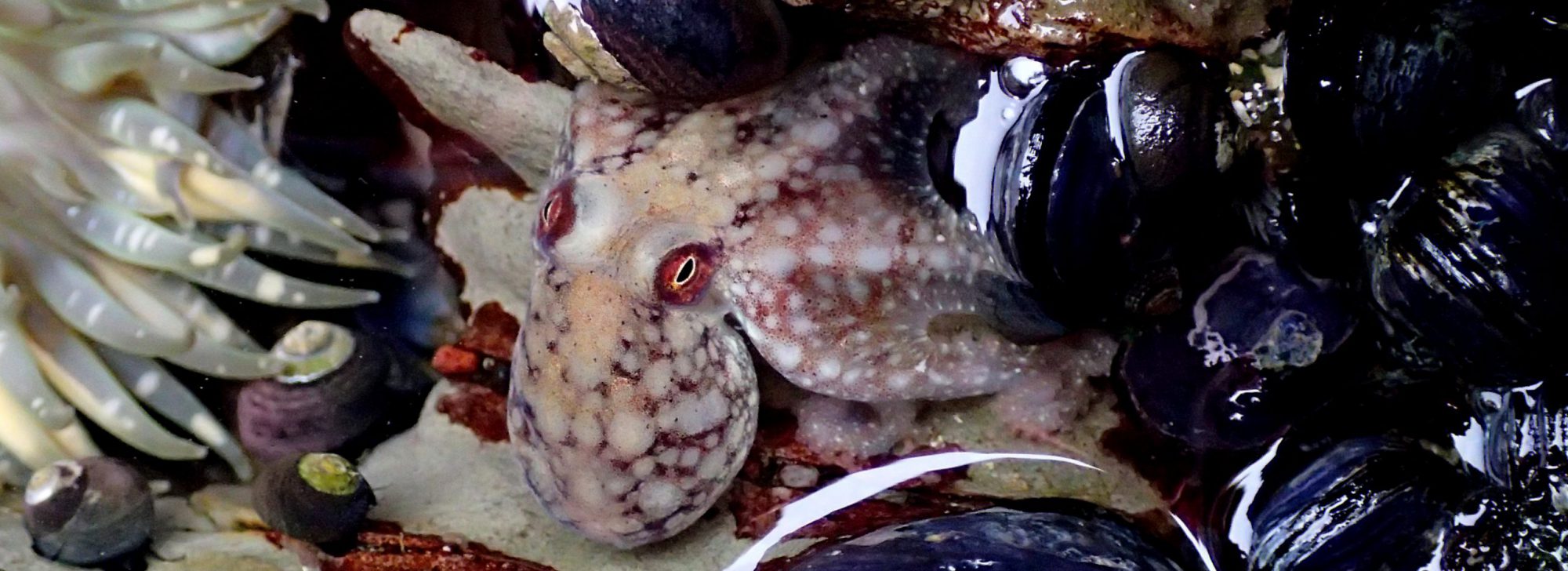This morning I drove up the coast to Pigeon Point. It was cold and very windy, and I was grateful to have decided to wear all of my layers. I don’t remember any cold mornings from last year’s low tides, which made me think that perhaps we’re returning to a more normal non-El Niño weather pattern. The wind was screaming down the coast from the north, and if it keeps up we should get some upwelling in a few days. Fingers crossed!
Even the pelicans, which can fly through strong winter storms, were having a bit of trouble with the wind:
My favorite kelp grows in the intertidal, and it wasn’t having any difficulty at all with the strong surf. It’s not large and doesn’t form the magestic kelp forests that divers flock to, but it is very charming in its own way. The sea palm Postelsia palmaeformis is a small (1/3-1/2 meter tall) kelp that lives only on exposed rocks sticking out into the brunt of the waves. It requires the full force of the crashing waves, where other algae would get broken off. They have a thick flexible stipe that bends with the waves and then pops back up. Postelsia is a protected organism and I can’t collect it even with my scientific collecting permit, which is fine with me.
This is the kind of environment in which Postelsia thrives:
You can tell how windy it was by the sound of the wind and my inability to hold the camera steady. As the tide comes in the pounding from the waves will only get worse. These little algae are pretty damn impressive!
Pigeon Point has always been a good place to see the 6-armed stars of the genus Leptasterias. Unlike the five arms that most of the local asteroids have, Leptasterias has six. And unfortunately for us naturalists, the taxonomy of the genus is incompletely understood. All that is agreed upon is that there are several species in the genus. This is referred to as a species complex, acknowledging that the genus contains more than one species but that the species have yet to be definitively described.
As you can see, these stars vary quite a bit in terms of arm thickness and color pattern. Most of the time they are blotchy but the blotches can be pink, gray, orange, or cream-colored. Some of the stars have slender arms with very little taper, while others have thicker arms that taper strongly to the tips. For the time being, until the sea star systematists come to consensus about the species in this genus, I’ll refer to all of them as Leptasterias sp.
Most of the Leptasterias that I see in the field are in the size range of 1-4 cm in diameter, usually no longer than my thumb. Today I saw a big one, which would have been about the size of the palm of my hand.
The reason this star doesn’t look quite as big as that in the above photo is that it was eating when I disturbed it. The star was humped up over its breakfast!
The unfortunate breakfast item, the turban snail Tegula funebralis, was about 2 cm in diameter. It seems like a very large and well-protected prey item for a star this size, doesn’t it? And yet, there it is. The animal is always right, and Leptasterias certainly knows what it should be eating.
And lastly, because they were just so beautiful and I can’t help myself, I’m going to close with photos of anemones.

24 April 2016
© Allison J. Gong
Take that, charismatic megafauna!










